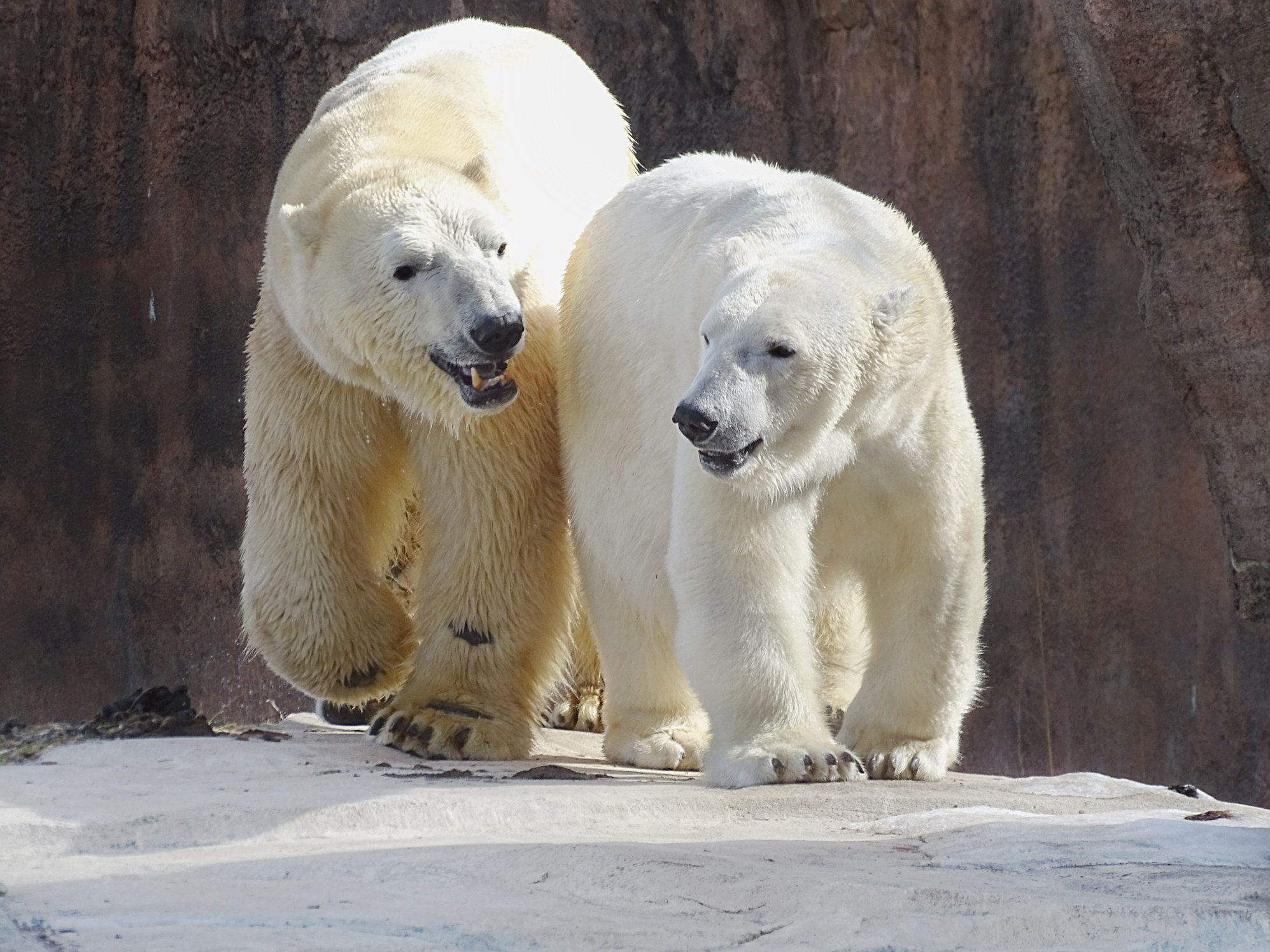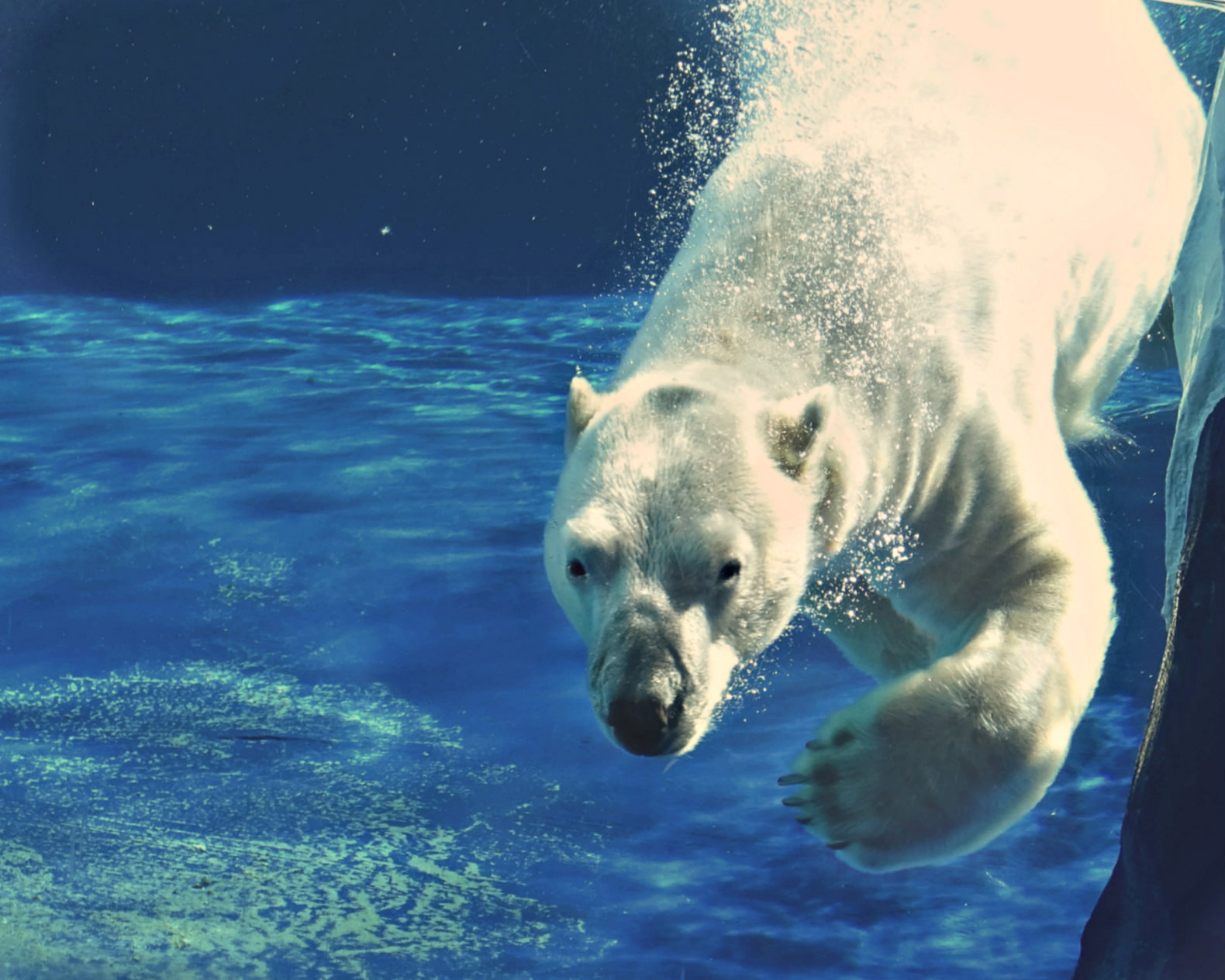Polar bear
Ursus maritimus
At the Detroit Zoo
Visitors can watch polar bears gracefully swim above their heads in the Arctic Ring of Life’s 70-foot-long Frederick and Barbara Erb Polar Passage. The habitat is home to male Nuka, born 2004, and female Suka, born 2012.
The polar bears’ habitat includes grassy tundra, a freshwater pool, a “pack ice” area and a 190,000-gallon salt water pool. The Arctic Ring of Life is one of North America’s largest polar bear habitats. This state-of-the-art, interactive facility encompasses more than 4 acres of outdoor and indoor habitats and was named the second-best exhibit at any zoo in the U.S. by The Intrepid Traveler’s guide to “America’s Best Zoos.”
Description
Polar bears have dense, thick undercoats protected by outer coats of long, transparent fur. The sun’s reflection from the dark skin through the transparent fur gives the illusion of a white coat. Their waterproof fur will stick together when wet and act as an insulator.
Fun Facts
-
Because it receives liquids from the prey it eats, the polar bear does not have to drink water.
-
The polar bear is a marine mammal and the most carnivorous member of the bear family since its diet heavily relies on seals.
-
A polar bear's blubber helps it float in water and also acts as a nutritional reserve, allowing the bear to go months without eating.
-
The polar bear has the richest milk of any bear species; it contains 35 percent fat.








